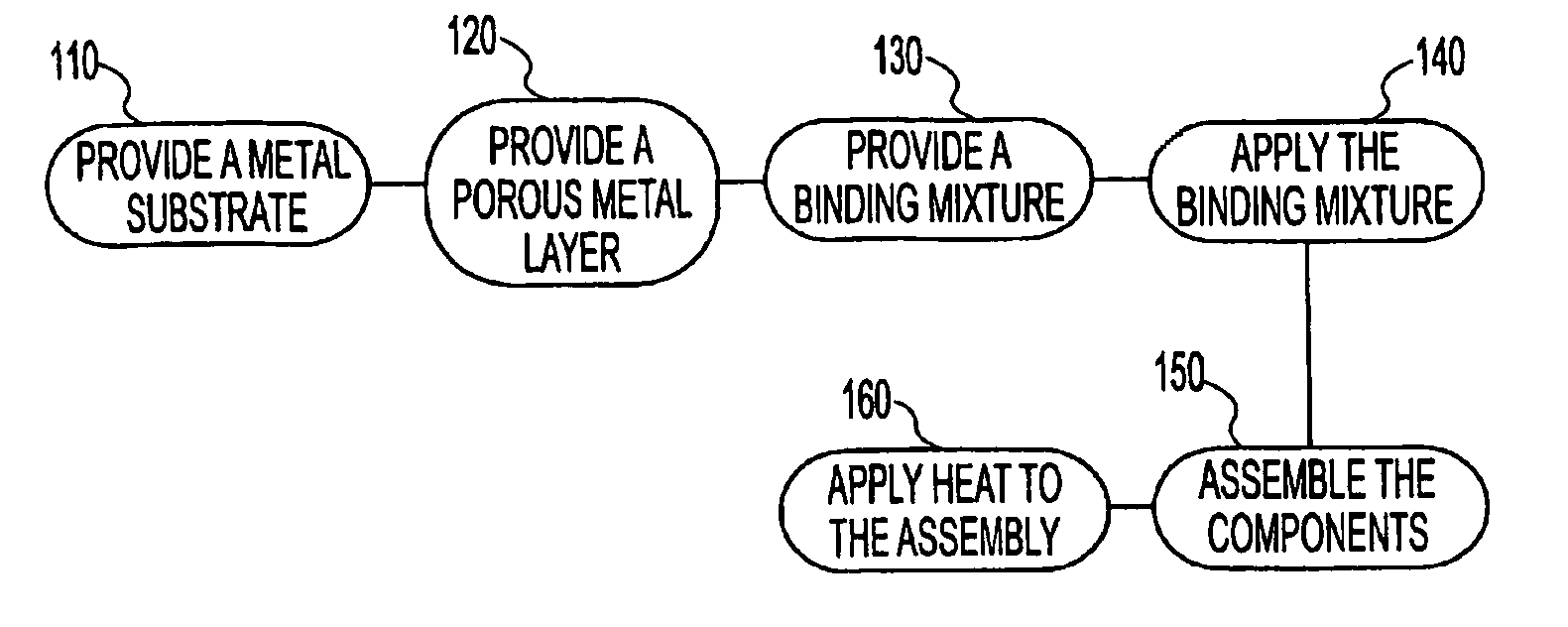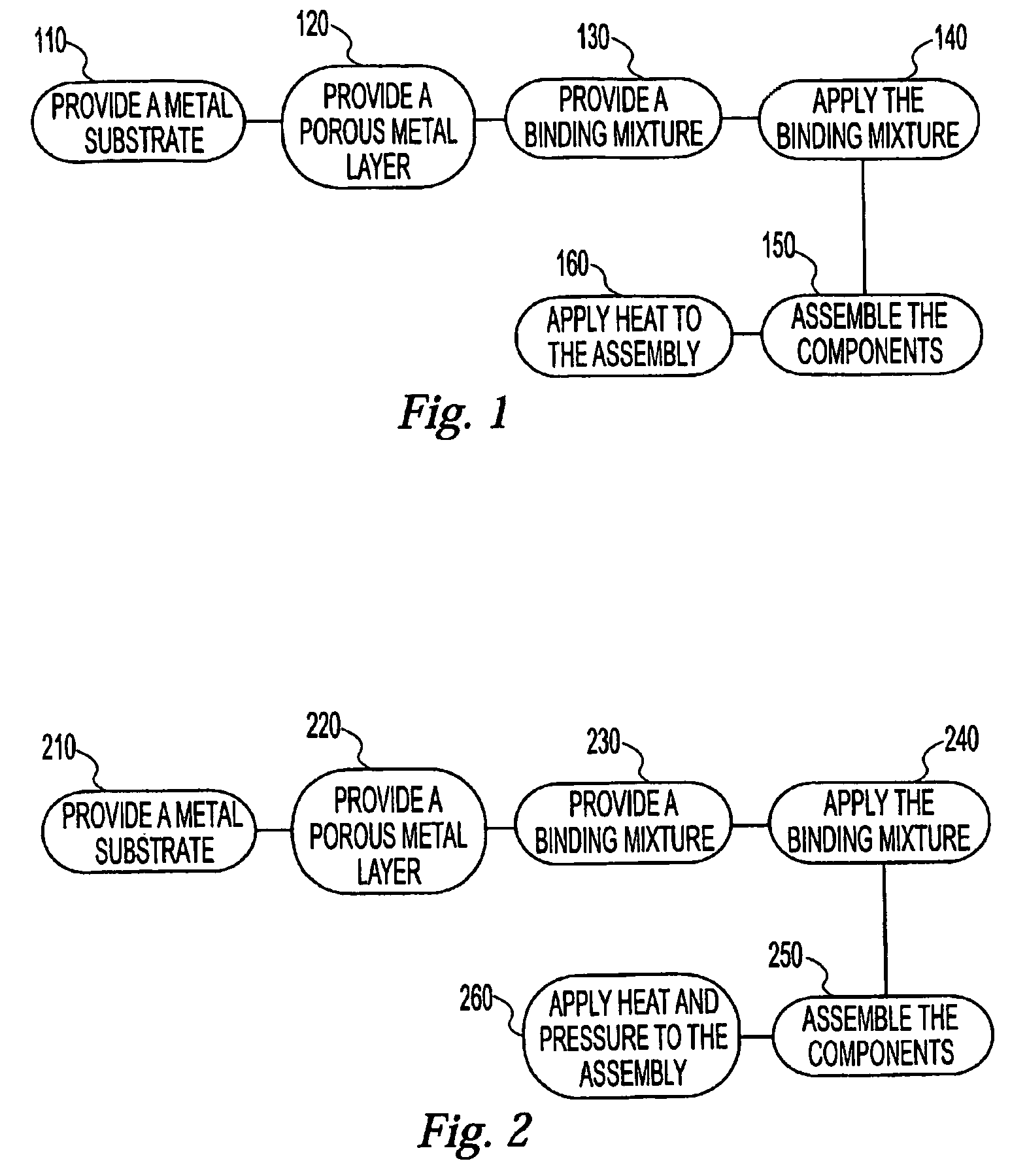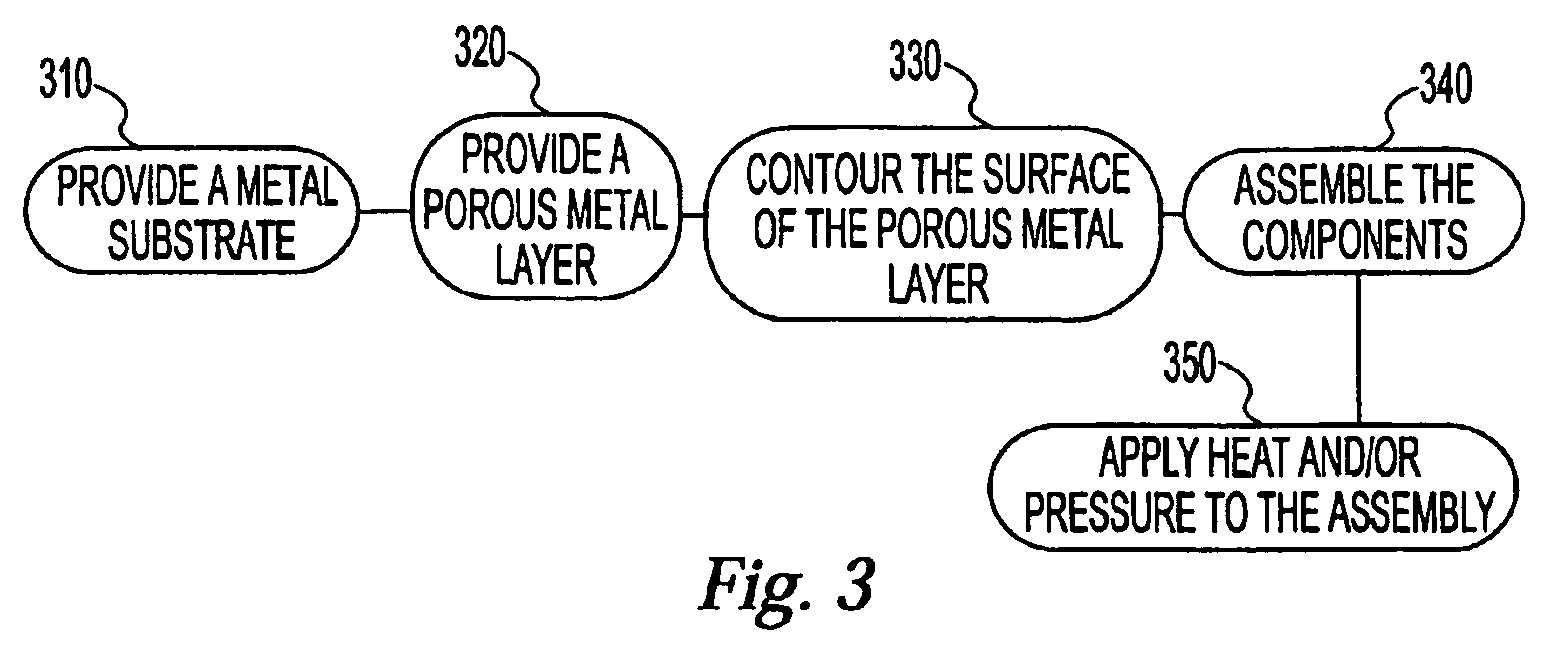Method for attaching a porous metal layer to a metal substrate
a technology of porous metal and metal substrate, which is applied in the direction of prosthesis, soldering apparatus, manufacturing tools, etc., can solve the problems of difficult metallurgy bonding between two components, large contact distance, and difficulty in sintering or diffusion bonding, so as to improve the bond strength and corrosion resistance
- Summary
- Abstract
- Description
- Claims
- Application Information
AI Technical Summary
Benefits of technology
Problems solved by technology
Method used
Image
Examples
examples
[0070]
SUBSTRATEPOROUSCYCLECYCLEENVIRON-CLAMPINGMATERIALLAYERTEMPERATURETIMEMENTPRESSUREBINDING MIXTURETi—6AL—VHEDROCEL 955° C.2 cycles at 4 hours eachArgon400 p.s.i.68% PVA + 32% (10% PVA,90% water solution)Ti—6AL—VHEDROCEL 955° C.2 cycles at 4 hours eachHelium400 p.s.i.68% PVA + 32% (10% PVA,90% water solution)Ti—6AL—VHEDROCEL 955° C.2 cycles at 4 hours eachArgon400 p.s.i.N / ATi—6AL—VMachined 350° C. (debind) +3 hours (debind) +0.01 TorrN / A68% PVA + 32% (10% PVA,HEDROCEL1200° C.4 hours (sintering)90% water solution)(sintering)Co—Cr—MoMachined1094° C.2 cycles at 4 hours each0.01 Torr400 p.s.i.68% PVA + 32% (10% PVA,HEDROCEL90% water solution)4001-0035 (ZM0473B1) utility application 04-10-05A
PUM
| Property | Measurement | Unit |
|---|---|---|
| thickness | aaaaa | aaaaa |
| temperature | aaaaa | aaaaa |
| pressure | aaaaa | aaaaa |
Abstract
Description
Claims
Application Information
 Login to View More
Login to View More - R&D
- Intellectual Property
- Life Sciences
- Materials
- Tech Scout
- Unparalleled Data Quality
- Higher Quality Content
- 60% Fewer Hallucinations
Browse by: Latest US Patents, China's latest patents, Technical Efficacy Thesaurus, Application Domain, Technology Topic, Popular Technical Reports.
© 2025 PatSnap. All rights reserved.Legal|Privacy policy|Modern Slavery Act Transparency Statement|Sitemap|About US| Contact US: help@patsnap.com



